Exploring the Odor of Stink Bugs and Pest Control
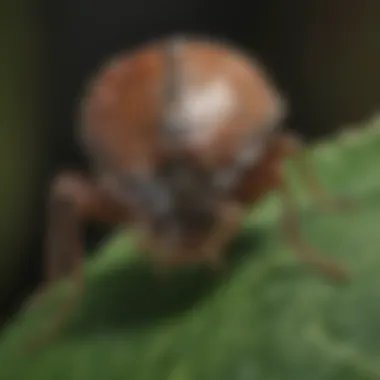
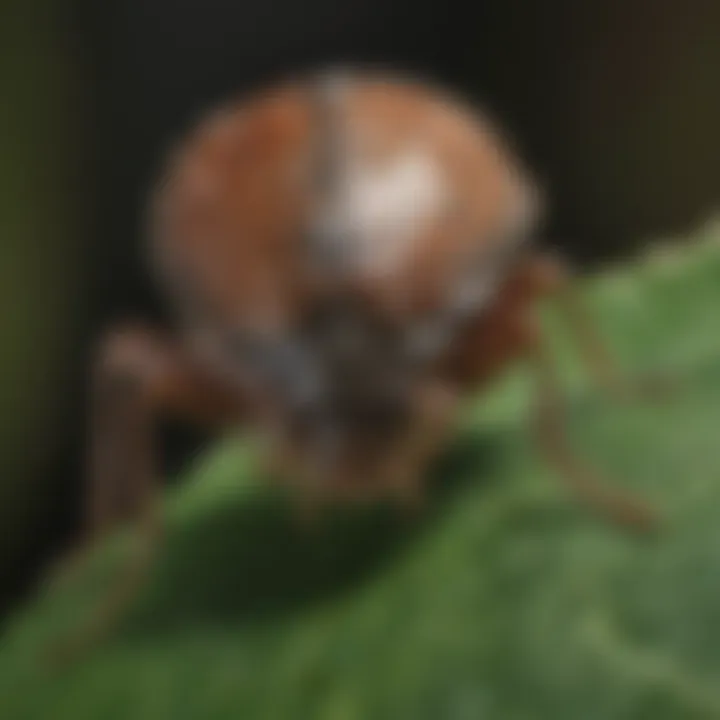
Intro
When one hears the term "stink bug," an immediate image might come to mind, usually not pleasant. It’s a common belief that these critters live up to their name, but there's more to their story than just a smelly reputation. This article dives into the world of stink bugs, with a keen focus on their odor production, the reasons behind it, and the impact it has on pest management strategies. The nuances of their biology and behavior are not just interesting—they hold practical implications for homeowners and gardening enthusiasts alike.
Understanding Pests
Definition of Pests
In the realm of home and garden care, the term "pest" commonly refers to any unwanted organism that causes harm or disrupts the function of a space. Stink bugs, with their unique characteristic of emitting a strong odor, fall squarely into this category. Typically, these pests can be broadly classified into various types—some feed on plants, while others may invade spaces, seeking warmth and shelter, especially when the weather turns chilly.
Importance of Pest Identification
Identifying pests accurately is crucial. Misidentification can lead to ineffective control measures, which may overlook the behaviors and vulnerabilities of the actual pest. Understanding stink bugs and their behavior helps inform strategies for combatting them. Recognizing their patterns, such as their movement during different seasons or how they react to environmental changes, is key for informed pest management.
Prevention Techniques
Home and Garden Preventative Measures
Taking proactive measures to protect your home and garden from stink bugs can save a lot of hassle down the line. Here are some handy tips:
- Seal Entry Points: Use caulk to seal cracks and gaps around windows, doors, and other potential entry points.
- Keep the Yard Tidy: Regularly mow the lawn, rake leaves, and clear debris. This reduces shelter options for these pests.
- Use Screens: Install fine mesh screens on windows and doors to minimize the chances of these bugs wandering inside.
Seasonal Prevention Tips
Certain seasons beckon an influx of stink bugs into homes:
- Fall Foliage: As temperatures drop in autumn, they often seek warmth. Keep a watchful eye during this transition.
- Springtime Sprouts: In spring, they emerge again from hibernation. Timing your prevention efforts can be pivotal.
Eco-Friendly Pest Control Solutions
Overview of Sustainable Practices
There’s a growing demand for eco-friendly pest control methods that do not compromise the environment. Sustainable practices prioritize the health of ecosystems while mitigating pest issues. For instance, using barriers like row covers in gardens can protect plants without chemical solutions.
Natural Remedies and Their Effectiveness
Some effective natural remedies include:
- Essential Oils: Oils like peppermint and neem can repel stink bugs. Mixing them with water and spraying can create a barrier.
- Diatomaceous Earth: This natural powder causes harm to bugs and is safe for plants and humans.
Applying these remedies strategically can provide an edge in addressing stink bug problems, while also respecting the local ecosystem. It encourages a balanced approach, promoting an environment where both plants and people can thrive.
By taking charge of the situations with knowledge and strategy, homeowners can navigate the stink bug dilemma more effectively. Understanding why stink bugs stink not only enlightens us about their nature but also equips us with the means to manage their presence in a thoughtful and sustainable manner.
Understanding Stink Bugs
Understanding the nature of stink bugs extends beyond just recognizing them as nuisances on your property. It’s key for homeowners and gardening enthusiasts alike to grasp the intricacies of these creatures. Laying a foundation of knowledge empowers you to approach stink bug control with a more informed mindset and thoughtful strategies. Knowing their behavior, biological classification, and common types helps in preventive measures and managing infestations effectively.
What Are Stink Bugs?
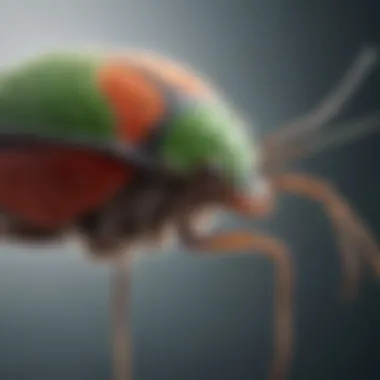
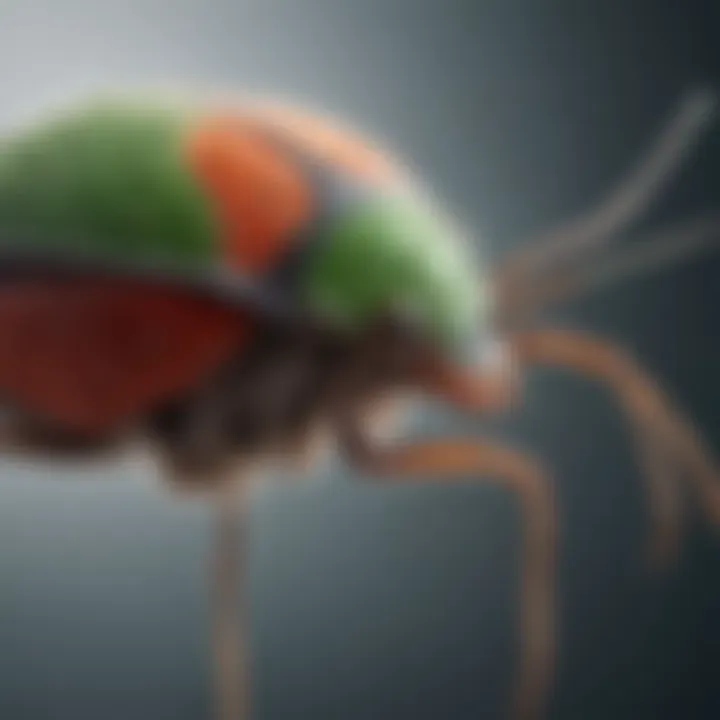
Stink bugs are small, shield-shaped insects belonging to the family Pentatomidae. They typically range in size from about 1/2 to 1 inch in length. Common characteristics include a broad back and distinctive, somewhat smelly odor, which is where their name comes from. When disturbed or threatened, they release a pungent chemical. This serves several purposes—from deterring predators to signaling to other stink bugs. While many might consider them simply a nuisance, stink bugs play significant roles in their ecosystems, particularly in gardens or agricultural fields where their feeding habits can impact crops.
The Biological Classification of Stink Bugs
Stink bugs belong to the Insecta class, and they are further classified under the order Hemiptera. More specifically, they fall into the suborder Heteroptera, which includes all true bugs. This classification describes not only their appearance but also their feeding habits, as they typically feed on plant sap using their specialized mouthparts.
- Kingdom: Animalia
- Phylum: Arthropoda
- Class: Insecta
- Order: Hemiptera
- Family: Pentatomidae
Understanding their classification helps contextualize their role within the insect community and their interactions with both plants and other animals.
Common Species of Stink Bugs
There are a wide variety of stink bug species around the globe, but a few have gained particular notoriety among homeowners:
- Brown Marmorated Stink Bug: Recognizable by its mottled brown color and widespread presence in North America, this species became a household name after its invasion in the early 2000s.
- Green Stink Bug: Found mostly in gardens, this bright green species is often considered a pest due to its appetite for vegetables and fruits.
- Spined Soldier Bug: Known for its more aggressive predatory habits, this species, while still a stink bug, can be a gardener’s ally, feeding on harmful pests.
Each species has unique behaviors and impacts on the environment, making identification crucial for effective pest management.
"To manage stink bugs, one must understand them as both pests and players in the larger ecological game. Identifying species correctly leads to more tailored pest strategies."
Haus owners, by becoming familiar with different types of stink bugs and their behaviors, can better prepare for potential infestations and the appropriate measures that need to be taken. To dive deeper into the complexities of stink bugs, it’s beneficial to explore reliable sources such as Wikipedia or Britannica for comprehensive insights.
Chemical Composition of Stink Bug Odor
Understanding the chemical landscape of stink bug odor is key to comprehending their behavior and impact, especially for homeowners and gardening enthusiasts. This section not only highlights the elements that contribute to their infamous stench but also explores how these chemical compounds play a significant role in the ecological dynamics of stink bugs.
What Causes the Odor?
The pungent smell emitted by stink bugs is primarily due to the secretion of specific chemicals called volatile compounds. These compounds are produced in glands located on their abdomen. When threatened, or when they are agitated, stink bugs release a cocktail of these compounds into the air. Some of the prominent ones include
- Aliphatic compounds
- Aldehydes
- Esters
- Aromatic hydrocarbons
Each component contributes to the distinctive odor profile. For example, (E)-2-alkenal has been noted for imparting a traces of metallic aromas, while others may carry a more fruity or floral undertone. The combination of these compounds results in that acrid smell that many have become familiar with. A common saying goes, “smells like a stink bug,” clearly indicating how ingrained this association has become in our everyday language.
Pheromones and Defense Mechanisms
In addition to their unpleasant smell, stink bugs employ a variety of pheromones as a signaling mechanism. These chemical signals play a crucial role in their social behavior, especially during mating or when alerting other stink bugs of danger. For instance, when one individual releases a pheromone in response to threat, this can prompt nearby stink bugs to either conceal themselves or prepare for escape.
Stink bugs have also adapted their chemical arsenal against predators. The smell acts not only as a deterrent for humans but serves as a warning, signaling potential harm to other animals. Some predators, which might fancy a stink bug snack, are deterred by their odor, thus giving the stink bugs a fighting chance for survival.
Comparison with Other Insect Odors
While stink bugs certainly have a reputation, understanding how their odor relates to other insects adds another layer of nuance. Ants, for instance, also emit strong odors produced by formic acid, which serves a similar defensive purpose. Moreover, other common pests such as bed bugs and cockroaches release pheromonal and odor responses to communicate and deter threats.
- Ants: Formic acid, often described as a vinegar-like smell.
- Bed bugs: Sweet and musty smell that some people never forget.
- Cockroaches: Oil-like scent that many find extremely off-putting.
In comparison, stink bugs generally have a more varied odor profile because of the range of chemicals they produce. Each insect generates its unique smell to serve its ecological niche, yet stink bugs stand out due to the distinctiveness and layer of complexity in their chemistry.
"While many might dismiss stink bugs simply as nuisances, their odor serves as a sophisticated form of communication and defense that should not be taken lightly."
Through our exploration of the chemical composition of stink bug odor, we gain not only a clearer picture of why these insects smell the way they do, but also an appreciation for their role in the broader ecosystem. With a rich array of chemicals working in tandem, stink bugs demonstrate nature's ingenuity in survival strategies.
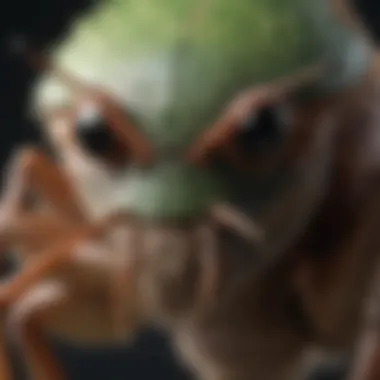
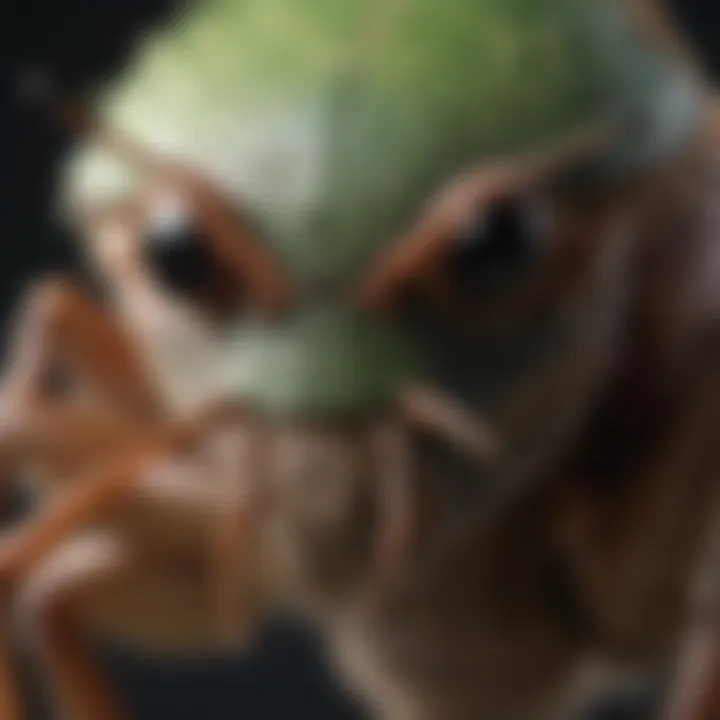
Perceptions of Stink Bug Odor
Understanding how people perceive the odor produced by stink bugs goes beyond simple dislike; it's about unraveling the myths and cultural narratives that form around these creatures. Often, the stories surrounding them can prompt reactions that aren't entirely rational. This is crucial in fostering a balanced view that allows homeowners to appreciate the role of these insects without overreacting to their presence. The perception of stink bug odor carries weight in daily interactions with these pests and influences control measures, anxiety levels, and even local legislation on pest management.
Common Misconceptions about Stink Bugs
People often carry a slew of misconceptions about stink bugs. One prevalent myth is that all stink bugs emit an unbearable smell noticeable from a distance. In reality, not every variety is as pungent as the infamous brown marmorated stink bug. In fact, many species produce a mild odor that only becomes apparent when they feel threatened. Furthermore, some believe that stink bugs actively seek out human proximity or invade homes for malice, while they merely seek warmth or refuge.
"Anticipating stink bug invasions often leads to unnecessary panic; understanding their behavior can provide much-needed peace of mind."
Another common myth claims that the odor emanating from these bugs could be toxic or harmful. However, while the smell is undeniably unpleasant and can cause some irritation, it poses no significant health risk to humans. Recognizing these misconceptions can help individuals respond more appropriately when encountering stink bugs, rather than reacting with fear or panic.
Cultural References and Their Impact
Cultural perceptions can shape how we view stink bugs and their odor in surprising ways. For instance, various folktales and urban legends paint these insects as harbingers of bad luck or disease. Subjectively, the odor may become associated with negativity, leading to heightened fear and anxiety. Literature or media portrayals often exaggerate the odor, likening it to essential oils gone wrong or even death—connecting stink bugs to larger fears of infestations or pestilence.
Some cultures have even used the smell of stink bugs in artistic expressions or as a metaphor in literature, clouding their true ecological roles with fanciful imagery. This conflation of reality with cultural narratives leads to misunderstandings and hasty actions against them—often unnecessary pesticide use, which is detrimental to both the environment and local fauna.
In understanding these cultural impacts, one can move toward a more rational approach in dealing with stink bugs, facilitating effective pest management strategies that do not hinge solely on knee-jerk reactions but rather on well-informed decisions.
The Role of Stink Bug Odor in Ecology
Stink bugs are not just pests ruining a lovely afternoon in the garden; they play a significant role in their ecosystems, largely thanks to the odors they emit. Their scents serve multiple ecological purposes, impacting both their survival and that of other species. Understanding how these odors function can help homeowners appreciate the complexities of these insects and their roles in nature.
Odor as a Deterrent to Predators
Stink bugs' odors are often their best line of defense. When threatened, many species release a distinctive, pungent smell. It’s like a button they press when danger approaches. This smell can act as a deterrent, signaling to predators like birds and small mammals that they are not a tasty snack.
- Chemical Composition: The primary components of stink bug odor include aldehydes and terpenes, which most creatures find off-putting. Only a seasoned predator might take the chance to taste one, and more often than not, that experiment has dire consequences.
- Behavioral Changes: For predators that have previously encountered stink bugs, the odor creates a learned avoidance. Once they’ve had a whiff, most learn quickly to steer clear next time. This illustrates an interesting aspect of ecological interactions – scents can carve out the food web dynamics.
"Nature knows best; the stronger the smell, the wiser the predator."
In areas with high populations of stink bugs, their presence can significantly reduce the numbers of certain predator species, inherently altering local ecosystems. That’s something to ponder the next time you encounter a stink bug in your yard.
The Ecological Impact of Stink Bugs
Stink bugs are not merely aromatic nuisances, they contribute to their habitats in both positive and negative ways. Their ecological influence can be summarized in several points:
- Plant Interactions: Stink bugs primarily feed on plants, which can lead to significant damage in agriculture. They can cause economic losses in crops if not managed properly. However, in smaller ecosystems, their feedings can be part of the control mechanism that regulates plant populations.
- Biodiversity: By serving as both prey and pests, stink bugs play a critical role in the biodiversity of their environments. Their abundance can indicate ecosystem health or distress. Homeowners might observe the resurgence of different plant species or shifts in insect populations linked to stink bug activity.
- Food Web Influence: The scents and secretions of stink bugs don't just impact their predators; they can also affect the behavior of other insects. Some pollinators may avoid areas where stink bug odors are prevalent, leading to changes in local plant pollination and overall health.
The influence of stink bug odors on local biodiversity is a prime example of the intricate balance of nature. Their presence, while often unwelcome, is a critical component of pest dynamics and ecosystems as a whole. Therefore, understanding their roles can lead to wiser choices in pest management and greater overall ecological preservation.
Managing Stink Bugs
Managing stink bugs is essential for homeowners, especially when these pests infiltrate living spaces or gardens. With their notable ability to produce a strong odor when threatened, understanding how to control their presence can help maintain a comfortable environment. Effective management not only reduces the nuisance they pose but also safeguards plants and crops from potential damage. The following sections provide a comprehensive look at the practical aspects of dealing with stink bugs through identification, prevention, eco-friendly methods, and professional assistance.
Identifying Stink Bug Infestations
Before anything else, recognizing a stink bug infestation is key. These little critters often blend in with their surroundings, making their detection challenging. Common signs include:
- Sightings: Spotting the bugs on windows, walls, or among foliage. They are usually greenish or brown-colored, often featuring a shield-like shape.
- Odor: A distinct, unpleasant smell can fill the air, especially if the bugs feel threatened.
- Damage to Plants: Yellowing leaves or wilting flowers may indicate a feeding problem. Look for tiny punctures in the plant leaves, as this can signal stink bug activity.
Being vigilant about checking both indoors and outdoors can go a long way in managing their population before it spirals out of control.
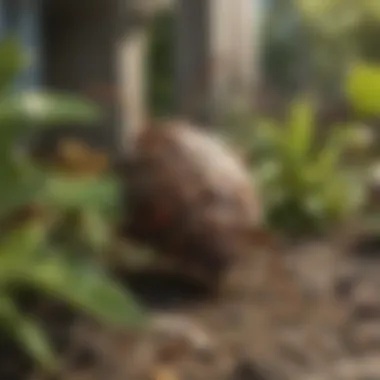
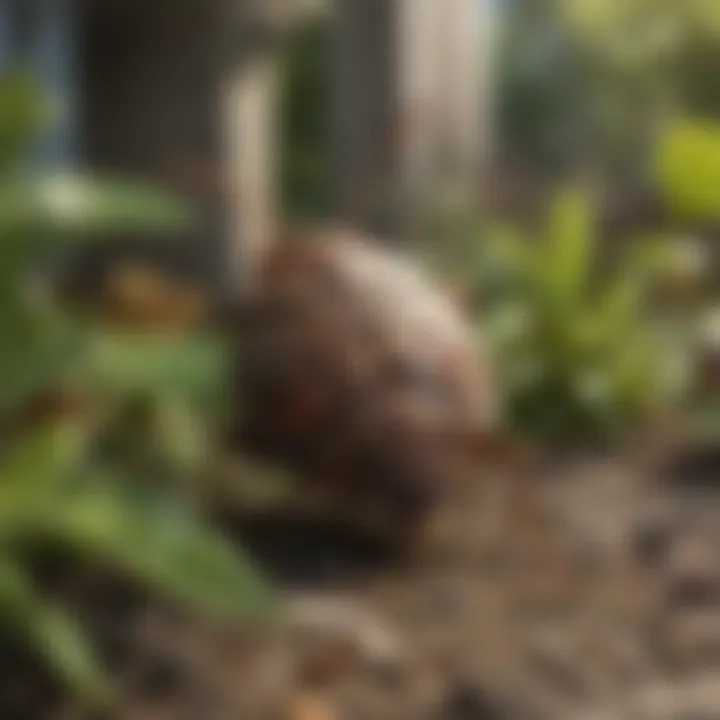
Preventive Measures for Homeowners
Taking steps to prevent stink bugs from entering homes can save a lot of hassle. Here are several simple yet effective strategies:
- Seal Entry Points: Inspect doors, windows, and gaps in your home. Use caulk or weather stripping to seal cracks that could serve as entry points.
- Install Screens: Ensure that the screens on your windows and doors are in good repair. This stops bugs from sneaking in while allowing fresh air in.
- Keep Areas Clean: Regularly check for clutter and debris around the home and garden. Removing places where stink bugs might hide or breed is a wise move.
By implementing these measures, homeowners can create a less inviting environment for stink bugs.
Eco-friendly Pest Control Solutions
For those looking for sustainable ways to manage stink bugs, there are various eco-friendly pest control options available. These solutions minimize harm to beneficial insects and the environment:
- Natural Predators: Introduce natural predators, like birds or certain types of wasps, which can help keep stink bug numbers in check.
- Homemade Sprays: Mix water with dish soap and a little vinegar. Spraying this solution on the bugs can deter them while being gentle on plants.
- Diatomaceous Earth: Sprinkling this powder around outdoor areas can help. It works by cutting through the bugs’ exoskeletons, ultimately killing them while being safe for pets and kids.
Utilizing these eco-friendly methods ensures that pest control is responsible and aligns with sustainability goals.
When to Call Professionals
In some cases, the infestation might be beyond manageable with DIY methods. Here are indicators that it might be time to resort to professionals:
- Severe Infestation: A noticeable number of stink bugs in living areas or gardens despite your preventive actions.
- Damage to Crops: When it's harming your plants or crops significantly. It can lead to bigger losses if left unmanaged.
- Desperation: If attempts to manage the interview haven’t worked and you feel overwhelmed.
Reaching out to a pest control expert can offer not only peace of mind but also targeted strategies based on experience and knowledge.
"Managing stink bugs effectively requires patience and persistence; however, understanding their behaviors vastly improves our ability to keep our spaces pest-free."
With a sound strategy for managing stink bugs, homeowners can not only deal with these pervasive pests but also promote a healthy living environment.
Finale
The conclusion of our exploration into stink bugs is more than just a summary; it serves as the capstone that ties together the intricate threads discussed throughout the article. Understanding the characteristics of stink bugs and their odor production is vital for a range of audiences, particularly homeowners and gardening buffs. This familiarity can empower individuals to deal with potential infestations more effectively and reduce the unpleasant, lingering aromas that can arise.
A significant point made in this discussion is the multifaceted nature of stink bug odor. It isn't just an annoying smell; rather, it serves crucial purposes in the stink bug's life cycle as a defense mechanism and a part of their ecological interactions. Recognizing that this odor is linked deeply to their survival strategy can shift the perception from mere annoyance to a greater understanding of these insects' behavioral ecology.
In addition, we emphasized the necessity of effective pest management. By applying the preventive measures highlighted in earlier sections—ranging from identifying the signs of stink bug presence to exploring eco-friendly solutions—homeowners can take proactive steps. This not only protects their living spaces but also supports local ecosystems by minimizing chemical treatments.
To wrap things up, the knowledge gained here holds immense value. It enables individuals to navigate issues related to stink bugs with greater ease and precision. Armed with this understanding, homeowners can better appreciate both the challenges and the ecological roles these insects play, which perhaps could foster a newfound respect for these often-maligned creatures.
Recap of Stink Bug Characteristics
Stink bugs stand out through several distinct features. They are recognizable by their shield-shaped bodies, which typically measure around 1 to 2 centimeters in length. Most notably, however, is their ability to emit a strong, pungent odor when threatened. This odor is produced through specialized glands and can be both a deterrent to predators and a signal to other stink bugs.
Here are key characteristics that define stink bugs:
- Appearance: Generally flat and shield-shaped, with colors ranging from brown to green.
- Behavior: Often gather in groups during feeding and exhibit strong responses when provoked.
- Habitat: Commonly found in gardens and agricultural fields, they thrive in both rural and suburban settings.
- Diet: Primarily feed on plants; they pierce stems, fruits, and leaves to extract sap, which can lead to damage in crops.
Understanding these traits not only helps in identifying stink bugs but also provides insight into why their odor might occur in your home or garden.
Final Thoughts on Managing Stink Bug Odor
Managing the odor produced by stink bugs requires a multifaceted approach, combining preventive habits and responsive actions. While the smell can be quite off-putting, implementing effective strategies can mitigate any potential distress it causes.
Some suggestions include:
- Sealing Entry Points: Regularly check for gaps around windows, doors, and vents to reduce problems.
- Cultural Practices: Encouraging a diverse garden can deter stink bugs by attracting their natural predators.
- Humane Traps: Consider using simple traps that capture stink bugs without causing harm, allowing for relocation instead of extermination.
Implementing these suggestions helps minimize the frequency of encounters and, by extension, the accompanying odors. Moreover, it fosters an environment where both humans and beneficial insects can coexist harmoniously. Homeowners can maintain a sense of control over their spaces, significantly reducing unpleasant encounters with these distinctive insects.



